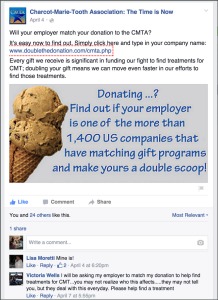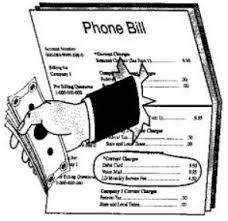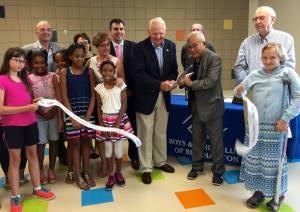Good morning, DonorDreams readers! As many of you know, my work schedule has become challenging in recent months, and I’ve asked a number of “virtual online friends” to help me out with guest blog posts. Today’s post is a Q&A session with Software Advice’s Janna Finch. The topic is focused on electronic donor communications (e.g. solicitations, stewardship activities, etc) and integration of all these things with your other software systems (e.g. donor database, CRM, financial management, etc). I hope you enjoy this morning’s post. Here’s to your health! ~Erik
 There are many ways to ask individuals for donations and support, and not every nonprofit asks in the same way. However, a new report from the fundraising technology advisers at Software Advice indicates that more and more nonprofits are asking for donations through email marketing, and want those marketing tools to integrate with their fundraising database and accounting systems. Nonprofit market researcher and author of the report Janna Finch shares her insights on why nonprofits are seeing software with more functionality, addresses common questions about navigating software selection, and discusses implications for the fundraising space in 2015.
There are many ways to ask individuals for donations and support, and not every nonprofit asks in the same way. However, a new report from the fundraising technology advisers at Software Advice indicates that more and more nonprofits are asking for donations through email marketing, and want those marketing tools to integrate with their fundraising database and accounting systems. Nonprofit market researcher and author of the report Janna Finch shares her insights on why nonprofits are seeing software with more functionality, addresses common questions about navigating software selection, and discusses implications for the fundraising space in 2015.
What was the most striking finding from your survey of nonprofits?
This year, 133 percent more buyers specifically requested built-in email marketing and outreach tools, and I was surprised to see such a large increase. It makes sense that nonprofits are requesting outreach functionality, of course, but this was a significant jump. Retaining existing donors by engaging them and building good relationships with them is a tried-and-true strategy for keeping consistent contributions. It’s good to see that small nonprofits are being proactive about trying to put new systems in place and considering new technology.

In replacing software, the top response was more functionality. What kind of functionality are buyers seeking and why?
Email marketing was by far the most-requested type of functionality at 42 percent, followed by automatic acknowledgements at 35 percent, reporting capabilities at 23 percent, and campaign management features and direct-mail support, both at 22 percent. In my interpretation, this indicates a desire to automate certain processes to be more organized and save time, generating more capacity to focus on furthering the mission of the organization.
Do you have any ideas or theories on what drove the increase in demand for email marketing?
I think that nonprofits understand the value of storytelling and personalized messaging for donors, and are looking for ways to do that more efficiently. It’s incredibly difficult to manage messaging for more than a few dozen donors without some kind of system, and software can make it easier. There are a good number of affordable fundraising systems with email marketing capabilities available today, so it’s hard to imagine why fundraisers wouldn’t want to consider using email-marketing tools.
What are some ways people can determine which fundraising software is best for their nonprofit?
There are three important considerations for nonprofits purchasing fundraising or donor management software—budget, staff/volunteer skill level and the activities you expect it to support. First, set your budget. If you’re not familiar with how fundraising software is priced, then read about total cost of ownership (TCO) so you know what licenses and fees vendors typically charge. Next, assess the technical literacy of everyone who will need to use the system. For example, if a nonprofit has lots of short-term volunteers who use the system, then ease of use should be priority. I also recommend creating a comprehensive list of every activity you want the software to support, few solutions truly “do it all,” and it can be helpful to prioritize the list into “need-to-have” and “like-to-have” categories.
What are the implications of the trends you identified for the fundraising tech space?
We see a trend of fundraising, donor management and CRM systems naturally morphing into a single system that supports all types of interactions with constituents and fundraising activities. There is overlap in what these systems do and how people use them, so it makes sense that this is happening. Hopefully these more comprehensive systems can make it easier for small nonprofits to amplify their message, better organize and protect their data, and promote long lasting relationships with donors and supporters.
You can read the full report here: Fundraising and Donor Management Software BuyerView | 2015

 I came across a cool
I came across a cool  With so many people posting updates, Tweeting the latest news, and hashtagging photos of their lunch, it’s a good idea to jump on the social media bandwagon and utilize different sites to promote matching gifts programs.
With so many people posting updates, Tweeting the latest news, and hashtagging photos of their lunch, it’s a good idea to jump on the social media bandwagon and utilize different sites to promote matching gifts programs.  Slavery ended on December 6, 1865 when the 13th Amendment to the Constitution of the United States was ratified. In a nutshell, this means that people cannot own people anymore. I have a hard time juxtaposing this fact with what I hear some non-profit professionals sometimes say, which is: “. . . that is my donor“.
Slavery ended on December 6, 1865 when the 13th Amendment to the Constitution of the United States was ratified. In a nutshell, this means that people cannot own people anymore. I have a hard time juxtaposing this fact with what I hear some non-profit professionals sometimes say, which is: “. . . that is my donor“. Let’s face it . . . non-profit organizations typically have many competing priorities and projects usually going on simultaneously (e.g. supporting the annual fund, building a new building, renovating an existing space, endowing a program, etc).
Let’s face it . . . non-profit organizations typically have many competing priorities and projects usually going on simultaneously (e.g. supporting the annual fund, building a new building, renovating an existing space, endowing a program, etc).
 It seems like one common theme in my work with non-profit organizations is that “building consensus” is difficult. Getting everyone on the same page can be like herding cats. It was this reality that had me all tied in knots a few months ago as I was sitting down for the first time with my Philanthropy Day planning committee. We had lots of things to decide (e.g. event location, registration fees, training sessions, discussion panels, etc), and there was very little time to do so.
It seems like one common theme in my work with non-profit organizations is that “building consensus” is difficult. Getting everyone on the same page can be like herding cats. It was this reality that had me all tied in knots a few months ago as I was sitting down for the first time with my Philanthropy Day planning committee. We had lots of things to decide (e.g. event location, registration fees, training sessions, discussion panels, etc), and there was very little time to do so. Last month I sat down with an executive director and two board members to explore how I might be able to help their organization grow their organizational capacity. Over the course of an hour, we talked about all kinds of awesome things such as:
Last month I sat down with an executive director and two board members to explore how I might be able to help their organization grow their organizational capacity. Over the course of an hour, we talked about all kinds of awesome things such as: The people closest to your mission are board and staff members. So, when the organization is short on cash and cannot meet its payroll obligations, it is only natural to ask board members to dig a little deeper.
The people closest to your mission are board and staff members. So, when the organization is short on cash and cannot meet its payroll obligations, it is only natural to ask board members to dig a little deeper. Don’t pass the basket and ask smaller, low capacity donors. Identify your larger, more capable donors and schedule an in-person meeting to explain what has occurred and ask for their support.
Don’t pass the basket and ask smaller, low capacity donors. Identify your larger, more capable donors and schedule an in-person meeting to explain what has occurred and ask for their support. Accounts receivable can be any number of the following individuals/entities:
Accounts receivable can be any number of the following individuals/entities: If your organization finds itself in this mess, then the bank is probably not extending you additional credit. While managing your cash flow on the backs of your vendors is a bad thing to do, sometimes life presents you with a bunch of bad options.
If your organization finds itself in this mess, then the bank is probably not extending you additional credit. While managing your cash flow on the backs of your vendors is a bad thing to do, sometimes life presents you with a bunch of bad options. This crisis came to your door for a reason, and you owe it to your clients, donors, volunteers and community to make sure it doesn’t happen again. The following is an incomplete checklist of things you should consider:
This crisis came to your door for a reason, and you owe it to your clients, donors, volunteers and community to make sure it doesn’t happen again. The following is an incomplete checklist of things you should consider:
![IMG_20150805_111547840_HDR[1]](https://donordreams.files.wordpress.com/2015/08/img_20150805_111547840_hdr1.jpg?w=300)
![IMG_20150805_105024312_HDR[1]](https://donordreams.files.wordpress.com/2015/08/img_20150805_105024312_hdr1.jpg?w=300)
![IMG_20150805_104819757[1]](https://donordreams.files.wordpress.com/2015/08/img_20150805_1048197571.jpg?w=300)
 For those who are curious, here are those 12 steps to a simple and effective face-to-face solicitation:
For those who are curious, here are those 12 steps to a simple and effective face-to-face solicitation: This morning’s video also reminded me of another YouTube video a friend sent me a few days ago. It is a montage of video clips featuring actor Matt Damon in the HBO television series “Entourage“. The YouTube video illustrates the emotions, fears, and mistakes associated with asking your friends and colleagues for a charitable contribution.
This morning’s video also reminded me of another YouTube video a friend sent me a few days ago. It is a montage of video clips featuring actor Matt Damon in the HBO television series “Entourage“. The YouTube video illustrates the emotions, fears, and mistakes associated with asking your friends and colleagues for a charitable contribution.